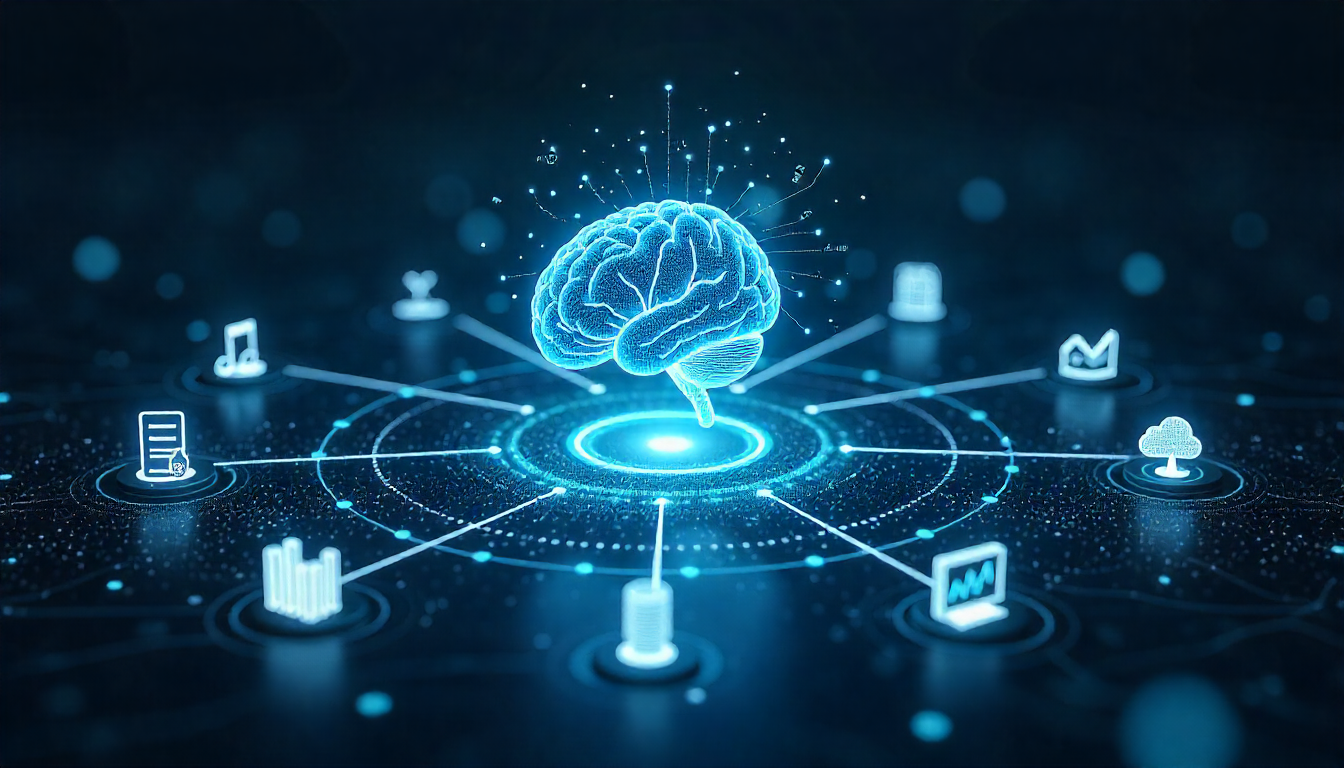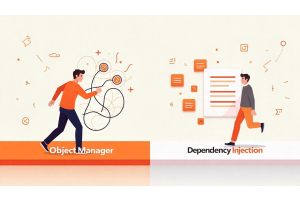How Generative AI Transforms the Data Management Lifecycle

How Generative AI Transforms the Data Management Lifecycle
Generative AI is reshaping data management from extraction through migration. Organizations use generative AI to automate manual tasks, reduce errors, and unlock insights from massive datasets. The data management lifecycle—covering extraction, integration, transformation, discovery, orchestration, and migration—now operates faster and more accurately with AI assistance.
The data management market is projected to reach $122.9 billion by 2025, driven largely by AI adoption. About 60% of leaders predict needing five or more data management tools to support priorities and manage data assets.
Table Of Content
Data Extraction: Automated Intelligence
Generative AI eliminates manual data collection bottlenecks. The technology adapts to changing structures and handles diverse data formats without constant human intervention.
Web Scraping Automation
AI learns website structures and adjusts to design changes automatically. Your data collection continues uninterrupted when sites update their layouts.
Unstructured Data Processing
AI analyzes relationships between data points to infer schemas from unstructured sources. Previously unusable data becomes actionable intelligence.
Document Parsing
AI trained on massive text datasets understands context and word relationships. It extracts relevant information from contracts, financial reports, and technical documents with high accuracy.
| Extraction Method | Traditional Approach | AI-Powered Approach |
|---|---|---|
| Web Scraping | Breaks with layout changes | Adapts automatically |
| Schema Inference | Manual mapping required | Automatic pattern recognition |
| Document Parsing | Rule-based extraction | Context-aware extraction |
Tip
To enhance your eCommerce store’s performance with Magento, focus on optimizing site speed by utilizing Emmo themes and extensions. These tools are designed for efficiency, ensuring your website loads quickly and provides a smooth user experience. Start leveraging Emmo's powerful solutions today to boost customer satisfaction and drive sales!
Data Integration: Seamless Connections
Generative AI bridges gaps between disparate data sources. Integration that once took weeks now completes in days.
Schema Mapping
AI analyzes data schemas and identifies attribute relationships. It automates mapping and performs transformations like unit conversion or date formatting without manual configuration.
Entity Resolution
AI trained on domain-specific data recognizes subtle variations in entity representations. It identifies duplicates and near-duplicates with higher accuracy than rule-based systems.
Data Unification
AI combines data from multiple sources into consistent datasets. Advanced matching techniques remove duplicate records automatically.
Data Transformation: Clean and Ready
Human-AI collaboration throughout the data lifecycle produces cleaner, more reliable datasets.
Automated Cleansing
AI analyzes data patterns and detects anomalies. It identifies outliers, corrects formatting inconsistencies, and handles missing values without manual review.
Error Detection
Pattern recognition catches errors traditional validation rules miss. AI learns from historical corrections to improve accuracy over time.
Data Discovery: Faster Insights
Generative AI accelerates exploration and reveals hidden patterns in your datasets.
Automated Profiling
AI generates comprehensive data summaries including types, distributions, and statistical measures. Manual inspection becomes obsolete.
Interactive Visualization
AI creates dynamic visualizations that adapt to user interaction. Complex datasets become intuitive to explore.
Anomaly Detection
AI identifies data points that deviate from normal patterns. You discover outliers and hidden patterns traditional methods miss.
Synthetic Data Generation
For privacy-sensitive datasets or limited data points, AI creates synthetic data mirroring real-world characteristics. You can explore and experiment safely.
| Discovery Task | Time Saved | Accuracy Improvement |
|---|---|---|
| Data Profiling | 70-80% | 25-35% |
| Anomaly Detection | 60-75% | 40-50% |
| Pattern Recognition | 65-80% | 35-45% |
Data Orchestration: Automated Workflows
Automating data lifecycle stages boosts efficiency, reduces errors, and improves productivity.
Workflow Automation
AI learns from historical data and workflow patterns. It generates or recommends optimal workflow structures, identifying dependencies and required transformations automatically.
Intelligent Scheduling
AI analyzes resource constraints, historical performance, and task dependencies. It recommends optimal task scheduling for peak efficiency.
Self-Healing Workflows
AI analyzes error logs and historical data to predict problems. It identifies common errors and fixes issues before they disrupt operations.
Data Migration: Efficient Transfers
Generative AI streamlines complex data transfers between systems and formats.
Automated Documentation
AI analyzes existing data sources and generates comprehensive documentation. It captures data lineage, types, constraints, and relationships without manual work.
Migration Rationalization
AI analyzes usage patterns to identify rarely accessed or irrelevant data. You migrate only what matters.
Quality Assurance
AI identifies and predicts potential quality problems like missing values, inconsistencies, or invalid formats. It flags issues before migration starts.
Post-Migration Validation
AI compares source and target datasets automatically. It identifies discrepancies and highlights potential issues immediately.
Implementation Requirements
Data Infrastructure
You need clean, accessible data before AI can work effectively. Success depends on combining human oversight with AI capabilities.
Skill Development
Teams require training on AI tools and workflows. 66% of organizations report employees lack skills to use generative AI successfully.
Integration Challenges
60% of organizations say generative AI can't yet integrate with their business tech stack. Plan for integration work upfront.
Security Considerations
71% of organizations worry generative AI will introduce new security threats to their data. Implement proper safeguards from day one.
ROI and Business Impact
Organizations using generative AI in data management report:
- 40-60% reduction in manual data processing time
- 25-35% improvement in data quality scores
- 50-70% faster time-to-insight for business intelligence
- 30-45% decrease in data-related errors
Automation enforces consistency and scales operations beyond manual capabilities.
Conclusion
Generative AI will continue evolving. Models become more sophisticated, tackle more complex challenges, and automate processes with greater accuracy.Organizations that foster a data-driven culture create environments where data drives consistent decision-making.
The data management lifecycle now requires AI integration to remain competitive. Organizations that adopt generative AI extract maximum value from their information assets while reducing costs and errors.
FAQs
What is the role of Generative AI in data management?
Generative AI enhances data management by automating tasks like data profiling, anomaly detection, and pattern recognition, which improves efficiency, accuracy, and decision-making.
How does Generative AI improve data profiling?
It quickly analyzes massive datasets, identifies data quality issues, and highlights patterns that would take humans significantly longer to uncover, saving 70–80% of time in profiling tasks.
Can Generative AI help detect anomalies in data?
Yes. Generative AI detects anomalies in real-time with high accuracy, reducing errors by 40–50% and alerting teams before issues impact business decisions.
What impact does Generative AI have on pattern recognition?
Generative AI identifies complex patterns across large and diverse data sources, boosting recognition accuracy by 35–45% and enabling predictive insights.
How does Generative AI save time in the data lifecycle?
By automating repetitive processes such as cleaning, classifying, and structuring data, Generative AI reduces manual workloads, saving 60–80% of the time typically spent on these tasks.
Does Generative AI improve data accuracy?
Absolutely. Generative AI enhances accuracy by identifying inconsistencies, filling gaps, and reducing human error, leading to cleaner datasets and more reliable analytics.
Can Generative AI support compliance in data management?
Yes. Generative AI can flag policy violations, monitor data access patterns, and ensure compliance with industry standards like GDPR and HIPAA.
How does Generative AI enable smarter decision-making?
By generating insights from structured and unstructured data, Generative AI empowers teams with predictive analytics, scenario modeling, and actionable recommendations.
What are the cost benefits of using Generative AI in data management?
Generative AI reduces costs by automating manual tasks, lowering error-related expenses, and optimizing data-driven processes without the need for extensive human intervention.
What’s the future of Generative AI in the data lifecycle?
Generative AI will continue to evolve by enabling autonomous data pipelines, real-time anomaly monitoring, and advanced analytics, making it central to next-generation data management strategies.









